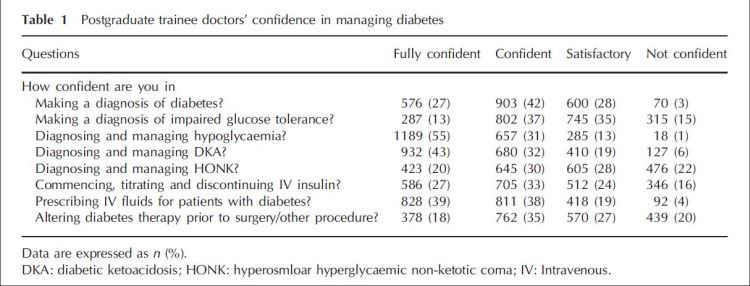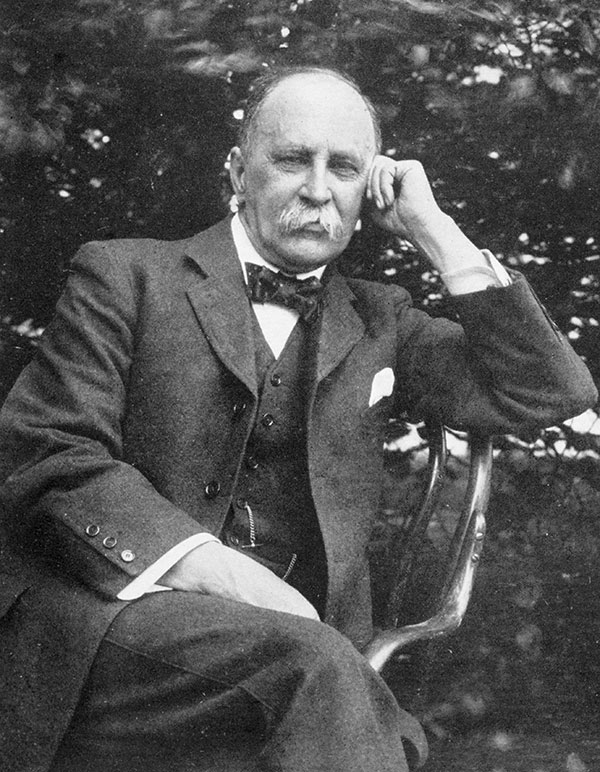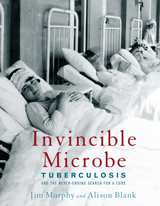new posts in all blogs
Viewing: Blog Posts Tagged with: physicians, Most Recent at Top [Help]
Results 1 - 5 of 5
How to use this Page
You are viewing the most recent posts tagged with the words: physicians in the JacketFlap blog reader. What is a tag? Think of a tag as a keyword or category label. Tags can both help you find posts on JacketFlap.com as well as provide an easy way for you to "remember" and classify posts for later recall. Try adding a tag yourself by clicking "Add a tag" below a post's header. Scroll down through the list of Recent Posts in the left column and click on a post title that sounds interesting. You can view all posts from a specific blog by clicking the Blog name in the right column, or you can click a 'More Posts from this Blog' link in any individual post.

By: Rebekah Daniels,
on 12/26/2014
Blog:
OUPblog
(
Login to Add to MyJacketFlap)
JacketFlap tags:
Books,
hospitals,
saving lives,
nursing,
healthcare,
doctors,
*Featured,
nurses,
physicians,
Science & Medicine,
Health & Medicine,
Quizzes & Polls,
Harry Jacobs Summers,
Sandy Summers,
Why the Media's Portrayal of Nursing Puts Us All at Risk,
Add a tag
Nurses play a huge role in hospitals, clinics, and various care facilities throughout the world. However, there are widespread misconceptions about what responsibilities nurses have. Nurses are saving lives and making a difference every day in health care with little recognition from the media or the world at large. Test your knowledge and see how much you really know about what exactly goes into the job of being a nurse.
Your Score:
Your Ranking:
Featured Image: USMC – 07790 by Ryan R. Jackson. Public Domain via WikiCommons
The post What do nurses really do? appeared first on OUPblog.


By: Julia Callaway,
on 6/13/2014
Blog:
OUPblog
(
Login to Add to MyJacketFlap)
JacketFlap tags:
Arpan Banerjee,
radiology,
Aequanimitas,
Incunabula Medica,
The History of Radiology,
scans,
William Osler,
osler,
by arpan,
arpan,
banerjee,
thomas’s,
history of medicine,
*Featured,
physicians,
Science & Medicine,
Health & Medicine,
Add a tag
By Arpan K. Banerjee
In May this year, the American Osler Society held a joint meeting with the London Osler Society and the Japanese Osler Society in Oxford at the Randolph Hotel. The Societies exist to perpetuate the memory of arguably one the most influential physicians of the early twentieth century, and to discuss topics related to Sir William Osler’s interests. It is fitting that this meeting was held in Oxford, where Osler spent his time as the Regius Professor of Medicine having transferred from another great seat of medical learning at Johns Hopkins Medical School in the United States.
Osler was interested in medical education (he produced his classic textbook, which ran to several editions) and set about trying to improve the education of future doctors. Osler’s other great legacy was his combination of superb clinical skills honed by experience not only on the wards but also in the laboratories, and his great interest in the humanities. Osler always tried to combine these two approaches in his work, and much of his writings and aphorisms are as relevant today as when they were first written. Medical students could read Aequanimitas today more than a century after it was written, and would profit from much of the advice to students within this volume of essays and addresses.
Osler had a great interest in the History of Medicine and helped found the history section of the Royal Society of Medicine in London. This scientific section has continued to flourish for over a century. He believed physicians should be well rounded and well read, and that medicine was a calling of both art and science. Although Osler was not against the idea of specialisation in medicine, he was a superb generalist and could manage both adult and child patients. He believed that doctors owed it to themselves to be well versed in the range of disease and illness afflicting mankind. His early interest in comparative pathology during his time at the Montreal Veterinary College prepared him well when dealing with infectious diseases which in the pre-antibiotic area were the scourge of the day, as compared with today in the West where degenerative diseases, cancers and diseases of longevity have overtaken infections as a major killer in the Western world.
The centenary of the Great War is 2014; it was Osler who started a campaign for the compulsory vaccination of soldiers for typhoid, publishing letters in the Times and The British Medical Journal on this topic. That year his literary output also included his Incunabula Medica, a study of 214 of the earliest printed medical books from 1467-1480. Although finished, it was not published until 1923, four years after his death.
Throughout the late twentieth century medicine has continued to super-specialize at an alarming pace throughout the world, driven by the rapid advances in medical diagnosis and treatment. X-rays were only invented in 1895, and the early part of the twentieth century began to see the introduction of chest x-rays into clinical practice. This was still a world away from CT scans, ultrasounds, and MRI scans, which are now de rigueur in the management of patients. Yet in spite of all this progress, disaffection with the medical profession seems rife. Could it be that the general physicians are going to make a comeback? Perhaps a more humanitarian approach to the patient is what is required again, maybe combined with the inexorable technical progress which will undoubtedly continue in the future. Osler would have been amused to see how the wheel of medical fashion has turned full circle.
Arpan K Banerjee qualified in medicine from St Thomas’s Hospital Medical School in London, UK and trained in Radiology at Westminster Hospital and Guys and St Thomas’s Hospital. In 2012 he was appointed Chairman of the British Society for the History of Radiology of which he is a founder member and council member. In 2011 he was appointed to the scientific programme committee of the Royal College Of Radiologists, London. He is the author/co-author of six books including the recent The History of Radiology.
Subscribe to the OUPblog via email or RSS.
Subscribe to only science and medicine articles on the OUPblog via email or RSS.
The post In praise of Sir William Osler appeared first on OUPblog.


By: Alice,
on 9/6/2013
Blog:
OUPblog
(
Login to Add to MyJacketFlap)
JacketFlap tags:
careers,
medical,
doctors,
heidi,
medical students,
multiracial,
medical school,
physicians,
medical technologies,
moawad,
Education,
health care,
*Featured,
Science & Medicine,
Health & Medicine,
Careers Beyond Clinical Medicine,
Heidi Moawad,
Add a tag
By Heidi Moawad
As a medical student, you are the future of health care. Despite the persistent negativity about the state of health care and the seemingly never-ending health care crisis, you have astutely perceived the benefits of becoming a physician. There is no doubt that health care delivery is unreasonably complex for everyone involved and, as much as political party loyalists insist that this is the fault of the ‘other’ party, the bureaucracy and inefficiencies have endured despite the back-and-forth changing hands of responsibility.
Fortunately, you have seen past the commotion and panic, and steadfastly remained optimistic. There is not a single medical student who ended up where he or she is by accident. The completion of rigorous undergraduate pre-medical prerequisite courses, outstanding grades, and top-notch MCAT scores required for application to medical school only come to those who have a well-thought-out plan, combined with a commitment and perseverance to become physicians. Medical school acceptance is exceedingly competitive, involving a multistep application process starting with preliminary applications, and then progressing to selective invitations for secondary applications and interviews. Academic excellence is the entry point, while interviews serve to distinguish young people who have a passion and a gift for helping humanity. Interviews are granted to few; offers of positions in a medical school class are even fewer.
 You have already overcome all of these hurdles and remained focused. You are fortunate to begin your medical education at a time when you can shape the future of the profession. Medical education is becoming more innovative, going beyond traditional approaches to learning. The potential benefits for students are endless. With these advantages, come higher expectations. As a doctor of tomorrow, you will often expect yourself to improve the world around you for your patients.
You have already overcome all of these hurdles and remained focused. You are fortunate to begin your medical education at a time when you can shape the future of the profession. Medical education is becoming more innovative, going beyond traditional approaches to learning. The potential benefits for students are endless. With these advantages, come higher expectations. As a doctor of tomorrow, you will often expect yourself to improve the world around you for your patients.
The direction of health care will certainly improve as your generation of young physicians in training masters the knowledge and proficiencies necessary to become licensed MDs in a few years. The capabilities that will make you a leader are skills that cannot be measured, yet can absolutely be learned. Like many of today’s future doctors, you are likely to find yourself driven to improve the health care options available for patients or to use technology in new ways that have not been thought of before. There has been an increasing trend of physicians playing roles that have not been defined previously.
As a young physician, while you fulfill the requirements for licensing, you may discover that there is more than one way to be a doctor. Some of the ways to be a doctor involve non-clinical work, which typically does not enjoy a well-established path. If you choose to establish experience and find employment in alternative areas besides clinical practice, you will find that you don’t have built in access to guidance and direction. Yet, it is advantageous for you to understand all of the professional opportunities available to you while you embark on the road to becoming physicians. Knowledge is power. Every young doctor ought to appreciate the full array of options after graduation from medical school. This can help set the stage for career satisfaction in the long term. You can attain a career path that is challenging and fulfilling. The results for medicine as a profession will be enhanced when all doctors use their skills and talents in the way that fits best.
Heidi Moawad, MD is neurologist and author of Careers Beyond Clinical Medicine, an instructional book for doctors who are looking for jobs in non-clinical fields. Read her previous blog posts.
Subscribe to the OUPblog via email or RSS.
Subscribe to only health and medicine articles on the OUPblog via email or RSS.
Image credit: Multiracial medical students wearing lab coats studying in classroom. Photo by goldenKB, iStockphoto.
The post To medical students: the doctors of the future appeared first on OUPblog.

Murphy, Jim and Alison Blank. 2012.
The Invincible Microbe: Tuberculosis and the Never-Ending Search for a Cure. New York: Clarion.
The minute I saw this book, I knew that I would read it, not because I am a fan of nonfiction and Jim Murphy, but for personal reasons. While my mother would often tell me stories of what it was like to be a child during WWII, my stepfather was older. He lived what I considered to be a fascinating, history-book life. He was an orphan. He remembered the Great Depression. He was a runaway. He was a "runner" on Wall Street. He had tuberculosis. He recalled being forced to march outside in the cold New York winter wearing nothing but a t-shirt and underpants, a common aspect of a patient's "curing" regimen. I can only imagine that a poor orphan boy's regimen was harsher than most. To this day, I cannot look at a sepia-tinged photo of poor scantily clad children in the snow without thinking of my stepfather. The girls on the cover of
The Invincible Microbe, "curing" outside on a porch, may be smiling in the photo, but I don't believe for a minute that it was by choice. To the end of his days, my stepfather loved rich foods and warm temperatures - small wonder.
So, to me growing up, TB was a thing of the past - a disease like polio, generally eradicated and of no concern to me. Then came the late 1980's and 1990's. My sister lived in Manhattan, and lo and behold, tuberculosis was suddenly a topic of discussion again. There was an outbreak in the City. She was worried. So to me, tuberculosis was then an urban thing, of no concern to me, except where my sister was concerned. My sister moved away from the City, and I thought little of it again ... until my children were born. Then to me, TB was "the bubble test," and I thought little of it, except that it seemed to be an easier test than the "tine test" I remembered from childhood, and I was thankful that my kids were protected...
or so I thought, until I read
The Invincible Microbe.
The Invincible Microbe: Tuberculosis and the Never-Ending Search for a Cure, tells the story of TB from its known beginning, in prehistoric times, through the days of magical, prayerful, and deadly "cures," until today, when TB is still a scourge in five areas of the world
(Democratic Republic of Congo, Ghana, The Philippines, Swaziland, Vietnam) and is only as far away from you as a plane ride.
Thoroughly researched, sourced and indexed, with numerous photographs,
The Invincible Microbe is a chronological look at the Tuberculosis germ, containing first-hand accounts (including a poem written by Robert Louis Stevenson en route to a sanatorium in Saranac Lake), period advertising, and quotes from scientific journals and other sources. It incorporates both the scientific and social aspects of infectious disease, answering such questions as:
How were breakthroughs in identification and treatment of the disease achieved? How did the medical community vet new procedures and ideas? How was public health policy created? How did the germ mutate to survive? How did Tuberculosis attack the human body? How was it spread? Who decided which patients received treatment and which do not?
Sadly, these questions are still being answered, and to date, Tuberculosis has no cure.
Comprehensive and engrossing, this is a book that will appeal to ages 10 to adult.
Want to know more about TB?
Check the Tuberculosis section of the World Health Organization (WHO) website.

By: Kirsty,
on 4/21/2011
Blog:
OUPblog
(
Login to Add to MyJacketFlap)
JacketFlap tags:
Health,
UK,
Science,
Medical Mondays,
hospitals,
patients,
doctors,
diabetes,
insulin,
Thought Leaders,
treatment,
glucose,
*Featured,
physicians,
oxford journals,
international journal of medicine,
junior doctors,
NPSA,
QJM,
rowan hillson,
trainee,
hypoglycaemic,
unconfident,
trainees,
Add a tag
By Rowan Hillson
The first time I increased a patient’s insulin dose I lay awake all night worrying that his blood sugar might fall too low. I was a house officer, and insulin was scary! The patient slept well and safely.
Diabetes is common, chronic and complicated. A recent nationwide audit of 12,191 people with diabetes in 206 English acute hospitals found that 15% of beds were occupied by people with diabetes. Worryingly, 37% of these patients experienced at least one error with their diabetes medications (the full results can be read here).
The National Patient Safety Agency (NPSA) has had over 16,000 reports of insulin incidents. In 2010 the NPSA issued an alert requiring action for all health care professionals to improve prescribing and administration of insulin, which was linked to a “Safe use of insulin” e-learning course.
I trained over 30 years ago. Are junior doctors more confident now? Apparently not. A study of 2149 junior doctors by George et al provides worrying evidence that UK trainees lack confidence in managing diabetes. Just 27% were fully confident in diagnosing diabetes, 55% in diagnosing and managing dangerous low glucose and 27% in managing intravenous insulin. Regarding management of diabetes, 24% of respondents would “not often, rarely or never” take the initiative to improve diabetes control. 43% would not adjust insulin in patients with poor glucose control.
Confidence is a combination of knowing what to do and believing you can do it. Experience helps. Also, we all need to know what we don’t know and when to ask for help. An unconfident doctor may make the patient anxious. Galen believed that in the 2nd Century: “Confidence and hope do more good than physic”.
Trainee doctors receive varying amounts of diabetes training and variable supervised experience of looking after people with diabetes. With too little training, trainees may rightly be worried about managing diabetes. Inadequate care of people with diabetes in hospital could worsen virtually every clinical outcome regardless of the main reason for admission. It also worsens patient experience. Diabetes is a common, potentially dangerous but eminently treatable condition. All units in all hospitals should have access to a specialist diabetes team. And trainee doctors should have training and support in diabetes management until they each feel confident in looking after people with diabetes under their care.

Table from the paper ‘Lack of confidence among trainee doctors in the management of diabetes: the Trainees Own Perception of Delivery of Care (TOPDOC) Diabetes Study’, QJM: An International Medical Journal, Advanced Access, 21 April 2011
Read on for an excerpt from Dr Hillson’s commentary ’Diabetes – big problem, little confidence’, which is published in QJM: An International Journal of Medicine, Advanced Access, 21 April 2011. You can read the
0 Comments on Diabetes: big problem, little confidence as of 1/1/1900




 You have already overcome all of these hurdles and remained focused. You are fortunate to begin your medical education at a time when you can shape the future of the profession. Medical education is becoming more innovative,
You have already overcome all of these hurdles and remained focused. You are fortunate to begin your medical education at a time when you can shape the future of the profession. Medical education is becoming more innovative, 

This looks fascintating! Living in Japan as an adult I have a very different view of TB than I did when I lived in the west. It is definitely still an issue here, although not as bad as in the Philippines. Every school and employer is legally obligated to provide x-rays (in a bus!) to check for TB every year. Since every child is vaccinated, they can't do the prick test. My employers are at a loss to what to do with me as I have never been vaccinated!
I definitely want to read this. I love microhistories anyway, and this is such an important subject.
Ooh, I’ll definitely have to look for this one. Thanks for the review.